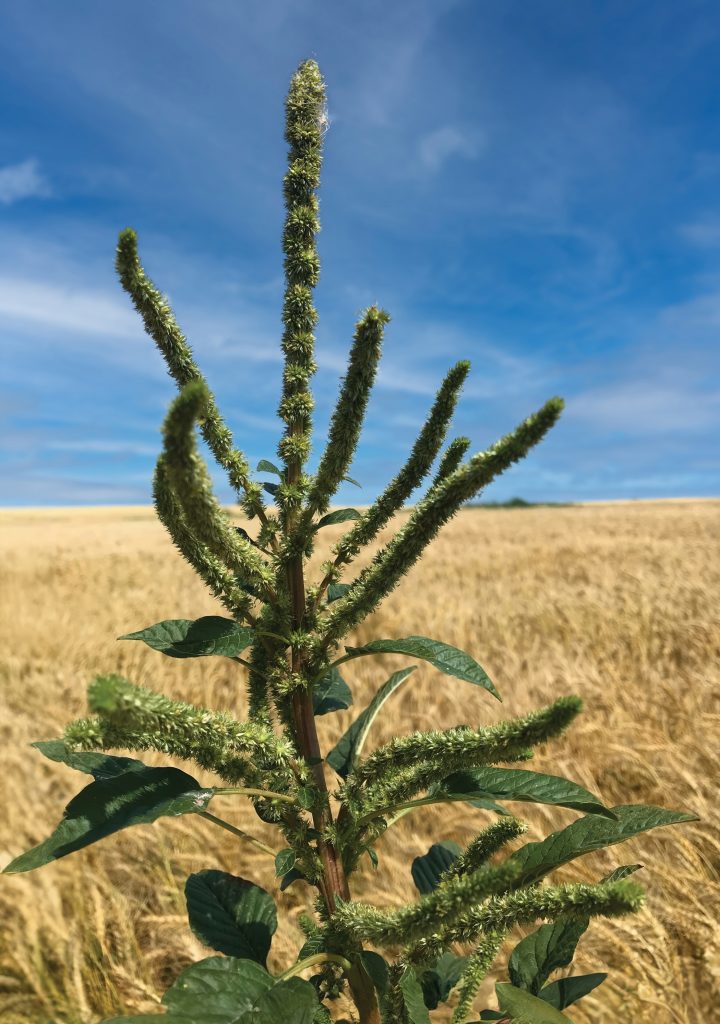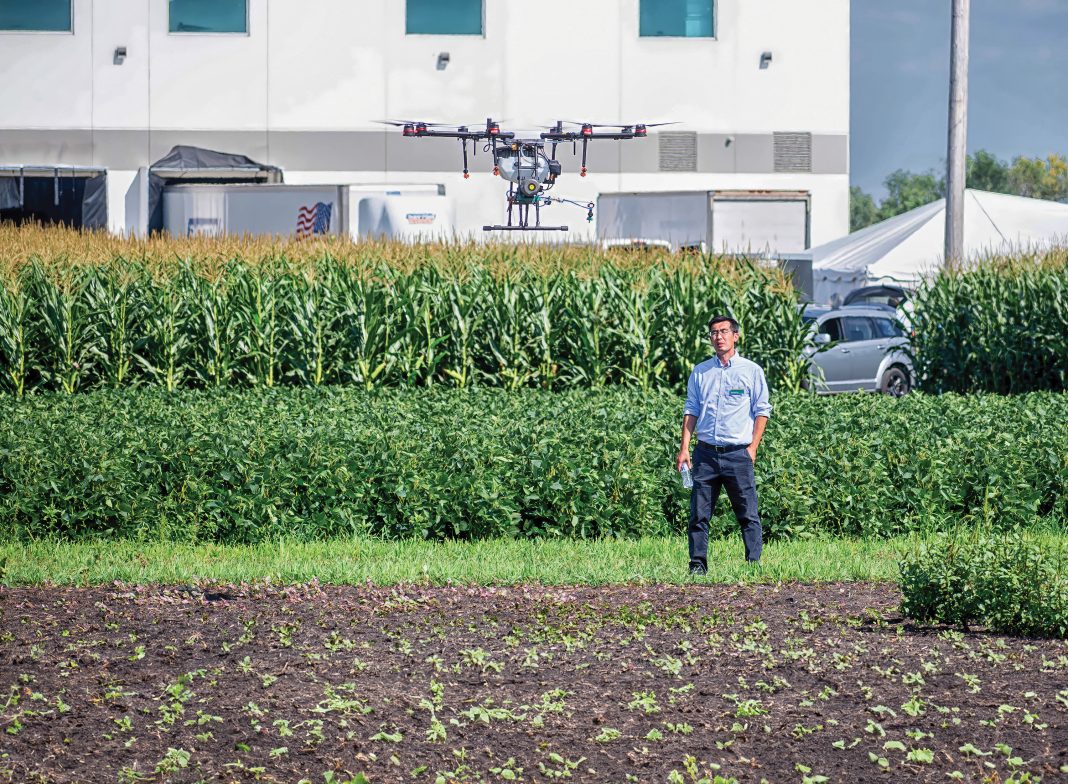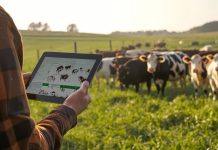For the past 70 years, herbicides have been used to control weeds in agriculture.i This is a major factor enabling farming to greatly increase food production worldwide, which led to more than a tripling of global population from 2.5 billion in 1950 to 8 billion in 2023. Unfortunately, widespread herbicide use has the unintended effect of creating herbicide resistance in multiple weed species, which is one of agriculture’s top challenges.
When removing 99.9 percent of weeds in a field, there is the 0.1 percent that live, produce seeds and then multiply. This has effectively created a very costly arms race with chemical companies working on new formulations of herbicide and seed companies working to keep up with trait development. Growers in turn are reliant on the technology these companies are creating to be able to keep up with their production.
In agriculture, there is a pressing concern, especially in specialty crops and non-genetically modified crops (non-GMOs), that solutions won’t be able to keep pace with the resistance of weeds. For genetically modified crops (GMOs), seed companies are stacking traits with glyphosate resistance (combining multiple approaches that have proven successful in the past) to stay ahead of herbicide resistance. However, seed companies continue to see negative economic impacts due to herbicide resistance.ii This has led to the creation of multiple innovative solutions to address these weeds, including the use of robots and drones, integrated heavy equipment and genetic targeting.
As we look to the future, there are several alternatives to herbicides heading into commercialization— strongly signaling a solution to herbicide resistance in the near future. These solutions include robots and drones, integrated heavy equipment and the genetic targeting of weeds. The approaches being discussed decrease the need for traditional herbicidesiii—with some researchers estimating a 90 percent reduction in herbicide usage.iv However, many researchers in the agriculture technology industry believe that multiple different solutions will need to be adopted to fully address herbicide resistant weeds.
The following sections discuss these solutions and challenges to their commercialization.
Robots & Drones
Robots and drones are some of the most talked-about solutions in agriculture to address weeds—these include both ground and air applications to destroy herbicide resistant weeds. Similar to integrated heavy equipment techniques, robots and drones rely on two modes of action. First, they must be able to identify the weeds; and second, they must be able to perform an action on the weeds. This creates a challenge to consistently identify and destroy weeds.v Weed identification with both the ground and air technology remain a core challenges.

To develop this technology, extensive imagery needs to be collected, and the training of detection algorithms is time consuming and costly.vi Advancements in hyperspectral sensors (providing access to a wider spectrum of light) have allowed for more consistent and accurate classification of weeds versus crops.vii
This solution does not rely on the use of specialized seed traits for crops. Researchers and industry have made both significant advancements in the development of detection algorithms and platforms to destroy weeds once identified—combining both into often smaller platforms (about the size of a folding picnic table) that can use specialized chemicals, lasers, heat or mechanical means to destroy the weeds. Since the platforms are smaller than the heavy equipment used in production agriculture, swarms of these devices will be needed when used on larger amounts of acreage.
Left, Palmer amaranth can be a farmer’s worst enemy. It can grow 2 to 3 inches per day in optimum conditions and reach a height of 6 to 8 feet. A single plant can produce up to 1 million seeds. Especially heavy infestations have reduced yield up to 79 percent in soybeans and 91 percent in corn. Palmer amaranth is extremely hard to control because it is prone to being resistant to several herbicides.
Integrated Heavy Equipment
Integrated heavy equipment removes the challenge of creating a platform that can navigate farm fields and instead focuses on the detection of weed species crops.viii These solutions have a similar challenge to that of robots and drones since the development of algorithms is time consuming and costly. Integrated heavy equipment has seen the most commercial advancement, most notably from products such as John Deere’s See & Spray™. These products integrate right into the already established workflow of producers, minimizing impacts on established timings of applications. Solutions in heavy equipment integration have been known primarily to use specialized chemicals and/or lasers to destroy weeds.
Genetic Targeting
Genetic targeting of weeds as a method to destroy them has piqued a lot of interest in the agriculture industry; however, it remains widely untapped.ix This method, called RNA interference (RNAi), impacts the RNA function within the weed by targeting and engineering for specific genetic sequences. Spray-induced gene splicing (using sprayers to deploy various types of RNAi) has been used to reverse herbicide resistance, allowing for the use of traditional herbicides again.x One of the challenges of this method is that a specific RNAi formulation is needed for individual weed species. Similar to integrated heavy equipment, genetic-targeting products would keep farm operations looking relatively the same with timed applications using sprayers throughout the season.
Positive Next Decade
Effective solutions to herbicide resistance are emerging rapidly. Researchers and organizations are working assiduously on solutions to address this challenge by using robots and drones, integrated heavy equipment and genetic targeting to tackle these weeds head-on. Each of these solutions will encounter challenges when applied to different geographies, cropping systems and growers’ workflows. While multiple unique challenges to each solution have been introduced throughout this article, these are in no way insurmountable.
Over the past five years, several of these solutions have reached pre-commercialization (and some are in commercialization)—being tested in small, medium and large-scale operations throughout the world. In addition to viability in the destruction of weeds, return-on-investment will also need to be studied to determine if these solutions are suitable for individual farm operations. The future is quite positive, as the next decade will see substantial advancement in diverse technologies to address herbicide resistance. ◉
i Gaines, T. A., Duke, S. O., Morran, S., Rigon, C. A., Tranel, P. J., Küpper, A., & Dayan, F. E. (2020). “Mechanisms of evolved herbicide resistance.” Journal of Biological Chemistry, 295(30), 10307-10330. ii Reddy, K. N., & Jha, P. (2016). “Herbicide-resistant weeds: Management strategies and upcoming technologies.” iii Wu, X., Aravecchia, S., Lottes, P., Stachniss, C., & Pradalier, C. (2020). “Robotic weed control using automated weed and crop classification.” Journal of Field Robotics, 37(2), 322-340. iv Vishnusai R, T. J. (2021). “Autonomous Upgraded Herbicide Sprayer Using Basic Concepts of Artificial Intelligence.” Turkish Journal of Computer and Mathematics Education (TURCOMAT), 12(12), 29-36. V Raja, R., Nguyen, T. T., Slaughter, D. C., & Fennimore, S. A. (2020). “Realtime weed-crop classification and localization technique for robotic weed control in lettuce.” Biosystems Engineering, 192, 257-274. vi Rai, N., Mahecha, M. V., Christensen, A., Quanbeck, J., Zhang, Y., Howatt, K., ... & Sun, X. (2023). “Multi-format open-source weed image dataset for real-time weed identification in precision agriculture.” Data in Brief, 51, 109691. vii Ahmed, M. R., Ram, B., Koparan, C., Howatt, K., Zhang, Y., & Sun, X. (2022). “Multiclass Classification on Soybean and Weed Species Using A Customized Greenhouse Robotic and Hyperspectral Combination System.” Journal of the ASABE, 0. viii Yeshe, A., Gourkhede, P., & Vaidya, P. (2022). “Blue River Technology: Futuristic Approach of Precision Farming.” Just Agriculture: Punjab, India. ix Mezzetti, B., Smagghe, G., Arpaia, S., Christiaens, O., Dietz-Pfeilstetter, A., Jones, H., ... & Sweet, J. (2020). “RNAi: What is its position in agriculture?” Journal of Pest Science, 93(4), 1125-1130. x Zabala-Pardo, D., Gaines, T., Lamego, F. P., & Avila, L. A. (2022). “RNAi as a tool for weed management: challenges and opportunities.” Advances in Weed Science, 40, e020220096.
William Aderholdt, PhD.
William Aderholdt, PhD, is the Director of Grand Farm where he
leads the Grand Farm Research and Education Initiative, a network of
growers, startups, corporations, education, researchers and government
agencies working to solve problems in agriculture. Aderholdt joined
Grand Farm in 2019 as the initiative’s first hire. Previously, he worked
at Montana State University in Residence Life, as well as on Civil
Rights and Title IX investigations. Aderholdt earned his BS in Cell
Biology and Neuroscience, and his MA and PhD in Education, all at
Montana State University.









